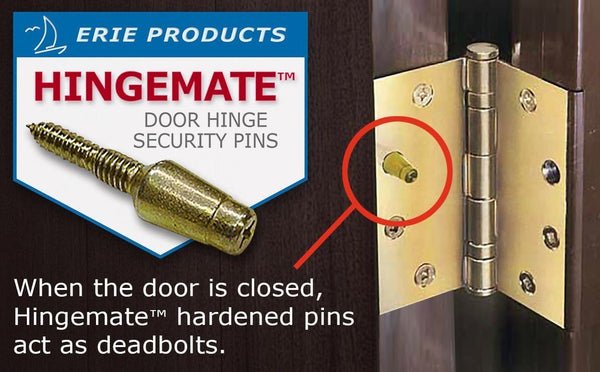
Now, you might be wondering what the difference really is. Standard hinge pins are just that—practical and functional. On the other hand, security pins offer an extra layer of protection, making them great for doors that need to withstand a little more wear and tear. So, let’s dive deeper into this topic and figure out which option is best for your needs.
Why Replace Hinge Pins?
Replacing hinge pins isn’t just about aesthetics; it’s essential for maintaining the functionality of your doors. Have you ever noticed how a door can sag over time? That could be due to worn-out hinge pins. A sagging door isn’t just annoying; it can lead to significant misalignment, making it harder to shut or latch properly. Constant rubbing against the frame can also chip away the paint, leading to bigger repair costs down the road.
Additionally, if your door hinges are squeaky, you might be tempted to just spray some oil on them. But when the pins are worn out, no amount of lubricant will help. In that case, replacing them is your best bet. It’s a straightforward process, and doing it yourself can save you a trip to the handyman.
Understanding Standard Hinge Pins
Standard hinge pins are the usual go-to option for most interior doors. They’re generally made of steel and come in various sizes to fit different hinge types. These pins are designed to hold the door in place while allowing smooth movement. Installation is pretty simple, too. All you need is a hammer and a flat-head screwdriver.
One of the main advantages of standard pins is their affordability. If you’re looking to make a quick fix without breaking the bank, standard hinge pins are a solid choice. However, there’s a catch. They don’t come with any security features, meaning they can be easily tampered with if someone tries to gain unauthorized access.
What Are Security Hinge Pins?
Security hinge pins take things up a notch. These pins are designed with added features to deter tampering. For instance, many security pins are thicker or have a design that makes it difficult for someone to simply remove them. Some even come with special locking mechanisms that make it harder for intruders to get past your door.
So, why would you choose security pins over standard ones? If your door leads to a garage, basement, or outside, security pins could be worth the extra expense. They offer peace of mind, especially if you’re in an area where break-ins are a concern. However, keep in mind that these pins can be more expensive and may require a bit more effort to install.
Installation: Step-by-Step
Ready to get those hinges in perfect working order? Here’s how to replace hinge pins, whether you opt for standard or security pins.
1. Gather your tools: You’ll need a hammer, flat-head screwdriver, and possibly a pair of pliers.
2. Remove the old pin: Insert the screwdriver under the pin head and gently tap it with the hammer to lift the pin out. If it’s stubborn, grab the pliers to pull it out more easily.
3. Insert the new pin: Align the new hinge pin with the hinge and gently tap it in with the hammer. Make sure it goes all the way through.
4. Test the door: Open and close the door a few times to ensure that everything moves smoothly. If it squeaks, some lubricant can help.
This process is pretty straightforward, but if you run into trouble, don’t hesitate to ask for help from a friend or look up a quick video for visual guidance.
Common Problems When Replacing Hinge Pins
Even the simplest tasks can come with challenges. Here are a few common issues you might encounter when replacing hinge pins:
– Stubborn old pins: Sometimes, older pins don’t want to budge. If they’re rusted or stuck, you might need to apply some penetrating oil and give it time to work.
– Misalignment: After replacing the pins, your door might still misalign. In this case, you might need to adjust the hinges slightly to make sure the door sits properly in the frame.
– Wrong size: It’s crucial to choose the right size hinge pins for your doors. If they’re too long or short, your door won’t function properly.
If you run into any of these issues, taking a step back and reassessing your approach can often lead to a smoother resolution.
When to Choose Which Pin?
The choice between standard and security hinge pins ultimately hinges on your needs. If you’re dealing with a high-traffic area or want to enhance your home’s security, investing in security pins makes sense. They offer extra protection against forced entry, giving you greater peace of mind.
On the flip side, if you’re just looking to fix a few interior doors that don’t lead to outside areas, standard pins will do the trick just fine. They’re simple, affordable, and get the job done without any fuss.
Replacing hinge pins on interior doors may not be the most glamorous home project, but it’s certainly one of the most important. Whether you opt for standard or security pins depends on your situation, priorities, and budget. You’ve learned that standard hinge pins offer practicality, while security hinge pins provide that added layer of defense.
Whatever choice you make, the satisfaction of a well-functioning door is worth the effort. Plus, tackling projects like this can empower you to take on even bigger DIY tasks in the future. So, roll up your sleeves and let’s get those doors swinging smoothly!